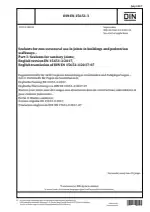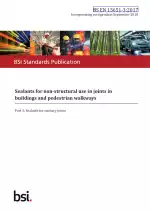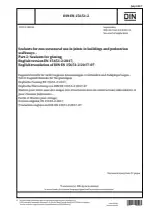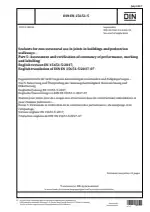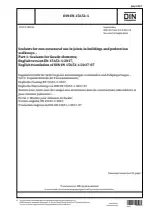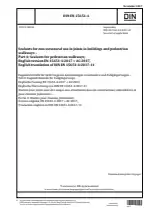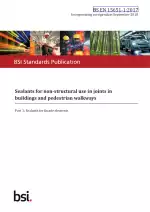Sealants for non-structural use in joints in buildings and pedestrian walkways - Part 3: Sealants for sanitary joints
Also Known As:
The DIN EN 15651-3 standard is a European standard that specifically focuses on sealants used for non-structural joints in sanitary areas in buildings. This standard outlines definitions and requirements for sealants used in interior areas of buildings that are exposed to non-pressurized water. It covers joints in various areas such as bathrooms, toilets, showers, domestic kitchens, and prefabricated elements in sanitary areas like shower cubicles.
However, it is important to note that this standard excludes industrial, drinking water, underwater (such as swimming pools and sewage systems), food contact applications, and the sealing of glass-ceramic cooktop panels. Additionally, the standard does not provide criteria or recommendations for the design of joints and installation of sealants in sanitary applications.
It is worth mentioning that this European standard also does not provide guidance for non-structural sealants in any non-paste form, those used in sanitary joints, and oil-based mastics. For the assessment and verification of constancy of performance (AVCP) and marking of these sealant products, the provisions are given in EN 15651-5, which is a separate part of the standard.
| Descriptors | Bathrooms, Building sealants, Buildings, CE marking, Certificates, Closets, Conformity, Construction, Construction materials, Constructional products, Dangerous materials, Definitions, Density, Durability, Joint sealants, Joint sealings, Joints, Non-load bearing, Pedestrian areas, Pedestrian roads, Production control, Properties, Release, Sanitary facilities, Sanitary rooms, Sealing, Sealing materials, Sealing means, Showers, Specification (approval), Testing, WC compartments, Permanency |
| ICS Codes | 91.100.50 - Binders. Sealing materials |
| Language(s) | English |
| File Size | 1013.8 KB |

